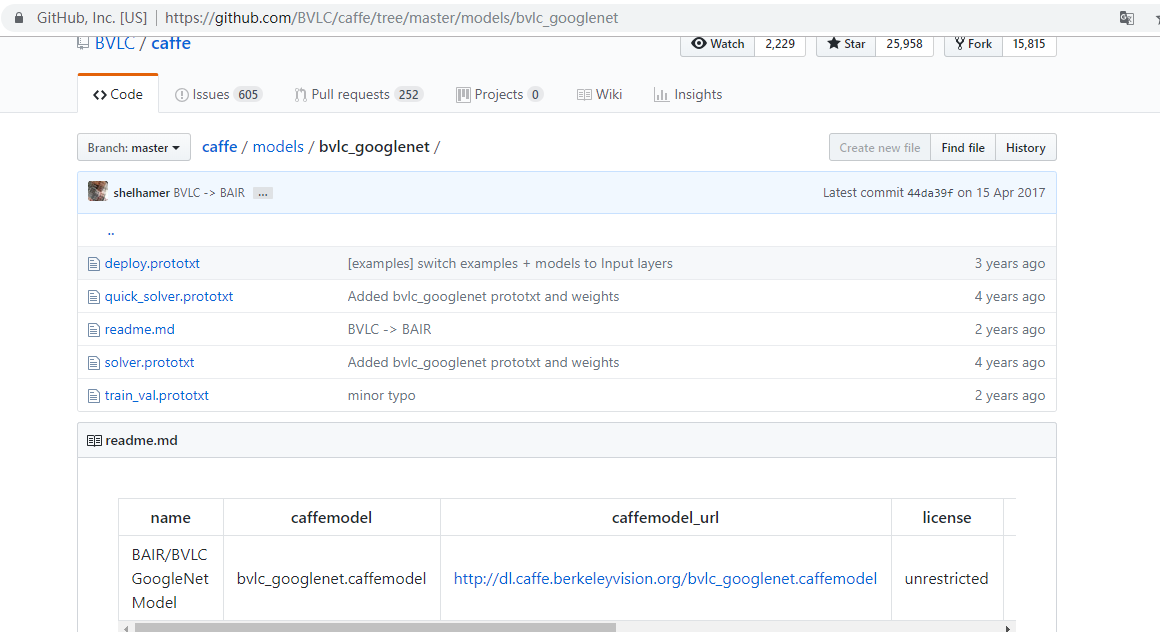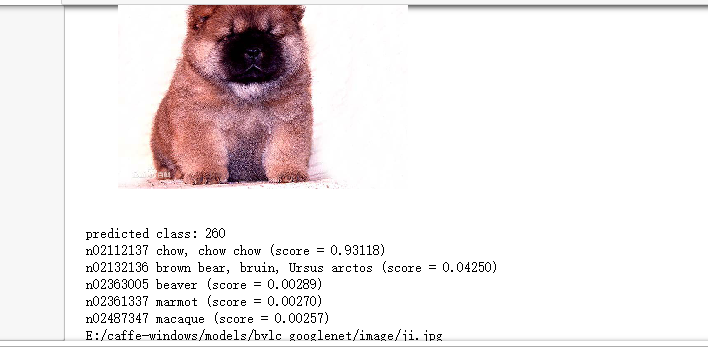從零開始學caffe(七):利用GoogleNet實現影象識別
阿新 • • 發佈:2018-12-17
一、準備模型
在這裡,我們利用已經訓練好的Googlenet進行物體影象的識別,進入Googlenet的GitHub地址,進入models資料夾,選擇Googlenet

模型結構
在這裡,我們利用之前講到的網路模型繪製網站畫出Googlenet的結構圖如下:
-
在這裡,pad就是給影象補零,pad:2就是補兩圈零的意思;
-
LRN就是區域性相應歸一化,利用LRN可以提高模型識別的準確率;
-
Inception結構中,不同大小的卷積核意味著不同大小的感受野,最後的合併意味著不同尺度特徵的融合。採用1,3,5為卷積核的大小,是因為使用步長為1,pad=0,1,2的方式取樣之後得到的特徵平面大小相同;
-
concat層用來合併資料,在這裡合併的條件是資料的後三個引數要相同,所以在前面的inception結構中,我們使用了不同的卷積核大小和pad。
準備圖片
在這裡,我們找幾張任意圖片,然後放入Googlenet的資料夾下,,作為待識別的圖片。
準備synset_words.txt檔案
synset_words.txt是用來將物體的類別序號進行對應的檔案,在識別過程中,我們先是得到序號,然後根據這個序號找到對應的物體種類。
使用python介面呼叫GoogleNet實現影象識別
在這裡,我們用jupyter開啟Googlenet.影象識別.ipynb檔案,這裡部分程式碼如下:
import 執行上述程式碼即可輸出對物體種類的預測概率



